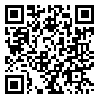Volume 1, Issue 1 (12-2019)
sjmshm 2019, 1(1): 1-5 |
Back to browse issues page
Download citation:
BibTeX | RIS | EndNote | Medlars | ProCite | Reference Manager | RefWorks
Send citation to:



BibTeX | RIS | EndNote | Medlars | ProCite | Reference Manager | RefWorks
Send citation to:
Sabetfar N, Sepahvand R. The effectiveness of cognitive behavior therapy on anxiety and depression inclusive. sjmshm 2019; 1 (1) :1-5
URL: http://sjmshm.srpub.org/article-3-26-en.html
URL: http://sjmshm.srpub.org/article-3-26-en.html
Master of clinic psychology, kish international azad university, Iran
Abstract: (4214 Views)
Background: This study examined the effectiveness of cognitive behavior therapy on depression and anxiety improve learners.
Methods: Using a quasi-experimental design Seventeen employees of Kish Free Zone Organization in accordance with criteria Psychiatric Association America were diagnosed with generalized anxiety and depression and were divided into two experimental and control groups. The experimental group were sixteen individual sessions of cognitive behavioral therapy. At the end of treatment and after three months of treatment, participants were re-evaluated.
Results: The results showed that CBT significantly improved depression and generalized anxiety disorder at post-test and follow-up points.
Conclusion: The results showed that CBT is effective in reducing symptoms of depression and anxiety
Methods: Using a quasi-experimental design Seventeen employees of Kish Free Zone Organization in accordance with criteria Psychiatric Association America were diagnosed with generalized anxiety and depression and were divided into two experimental and control groups. The experimental group were sixteen individual sessions of cognitive behavioral therapy. At the end of treatment and after three months of treatment, participants were re-evaluated.
Results: The results showed that CBT significantly improved depression and generalized anxiety disorder at post-test and follow-up points.
Conclusion: The results showed that CBT is effective in reducing symptoms of depression and anxiety
Type of Study: Research |
Subject:
Quality of Life
Received: 2019/03/16 | Revised: 2019/08/11 | Accepted: 2019/09/25 | Published: 2019/12/31
Received: 2019/03/16 | Revised: 2019/08/11 | Accepted: 2019/09/25 | Published: 2019/12/31
References
1. American psychiatric Association (2000). Diagnostic and statistical manual of mental disorders (4th ed).
2. Bagheri Yazdi. S.A., Bolhari. J., Shah Mohammadi, D. (1990). investigate the epidemiology of mental disorders in rural areas Meibod Yazd Journal of Psychiatry and clinical psychology, vol 1,pp: 42-32.
3. Bahrami, F., Rezvan, S.(2007). Relationship between Anxious Thoughts and Metacognitive Beliefs in High School Students with Generalized Anxiety Disorder, Journal of Psychiatry and Clinical Psychology, vol3.
4. Brown,H. M., Eley, T. C., Broeren. S., MacLeod, C. Rinck, M., Hadwin,. J. A., Lester. K. J. (2014). Psychometric Properties of reaction time based experimental Paradigms measuring anxiety- related information- Processing biases in children. Journal of Anxiety Disorders. 28: 97-107. [DOI:10.1016/j.janxdis.2013.11.004] [PMID]
5. Brown,H. M., McAdams,T.A., Lester.K.J., Goodman. R.,Clerk, D. M., & Eley, T. C. (2013). Intentional threat avoidance and familial risk are independently associated with childhood anxiety disorders. Journal of Child Psychology and psychiatry. 54,(6)678-685. [DOI:10.1111/jcpp.12024] [PMID]
6. Dugas MJ, Robichaud M. (2007). Cognitive-behavioral treatment for generalized anxiety disorder: From science to practice. New York: Routledge. [DOI:10.1093/oxfordhb/9780195307030.013.0027]
7. Foa EB. (1996). Cognetive biases in generalized social phobia Journal of Abnormal Psychology, 105(3); 433-439. [DOI:10.1037/0021-843X.105.3.433] [PMID]
8. Gagnon F, Thibodeau N. (2007). Efficacy of cognitive behavioral treatment for generalized anxiety disorder: Evaluation in a controlled clinical trial. J Consult and Clin Psycholo. 68(6): 975-964
9. Hazlett-Stevens H. (2008). Psychological approaches to generalized anxiety disorder: A clinician's guide to assessment and treatment. New York, NY: Springer. [DOI:10.1007/978-0-387-76870-0]
10. Hopko, D. R., Bell, J. L., Armento, M. E. A., Hunt, M. K., & Lejuez, C. W. (2007). Behavior therapy for depressed cancer patients in primary care. Psychotherapy: therapy, Practice, Training. 42, 236-243. [DOI:10.1037/0033-3204.42.2.236]
11. Kessler, RC.,Berglund, P.,Demlero, R.,Merikangas, KR., Walters, EE.(2005).Lifetime prevalence and age of onset distributions of DSM-IV disorders in the national co morbidity survey replication. Archives of General Psychiatry, 62,593-602.
https://doi.org/10.1001/archpsyc.62.6.593 [DOI:10.1001/archpsyc.62.6.617] [PMID]
12. Lachenal-cherallt, K., Maunchand, P., Couttraux, J., Bouvard , M. Q., & Martin, R. (2006). Factor analysis of the schema questionnaire-short form in a nonclinical sample. Journal of Cognitive Psychotherapy, 20, 3, 311-318. [DOI:10.1891/jcop.20.3.311]
13. Perez Nieto MA, Redondo Delgado M, Matthews L, Bueno N.(2010). Cognitive Control and Anxiety disorders: Metacognitive Beliefs andStrategies of control Thought in GAD and OCD. Clinica y salud. 21(2): 159-166. [DOI:10.5093/cl2010v21n2a5]
14. Portman M.(2008). Generalized Anxiety Disorder across the Lifespan: An Integrative Approach. New York: Springer. [DOI:10.1007/978-0-387-89243-6]
15. Roger C, Allison JO, Pamela MS. David JA.(2008). A meta-analysis of CBT for pathological worry among clients with GAD. J Anxiety Disord. (22): 108-116. [DOI:10.1016/j.janxdis.2007.01.002] [PMID]
16. Saatchi, M.,Kamkari, K., Asgarian,M.(2009). Psychological tests. Editin Virayesh.[PERSIAN].
17. Sadock BJ, Sadock VA. (2003). (Eds.) Kaplan and Sadock's Synopsis of Psychiatry (9th Ed.). New York: Williams & Wilkins; 2003.
18. Sadock, Virginia. Sadock, Benjamin (2003). Summary Psychiatry, Translation Nusratullah Pour Afkari2004, Tehran: Publication Shahrab.
19. Sadoughi, Z., Aguilar - Vafaei, M.,;Rasoulzadeh Tabatabai, K., Esfahanian,N.(2007). Factor Analysis of the Young Schema Questionnaire-Short in non-clinical samples. Journal of Psychiatry and Clinical Psychology , (2)PP: 214-219.
20. Warner CM, Reigada LC, Fisher PH, Saborsky AL, Benkov KJ. (2009). CBT for anxiety and associated somatic complaints in pediatric medical settings: An open pilot study. J Clin Psychol in Med Settings. (16): 169-177. [DOI:10.1007/s10880-008-9143-6] [PMID]
Send email to the article author
| Rights and permissions | |
 |
This work is licensed under a Creative Commons Attribution-NonCommercial 4.0 International License. |









